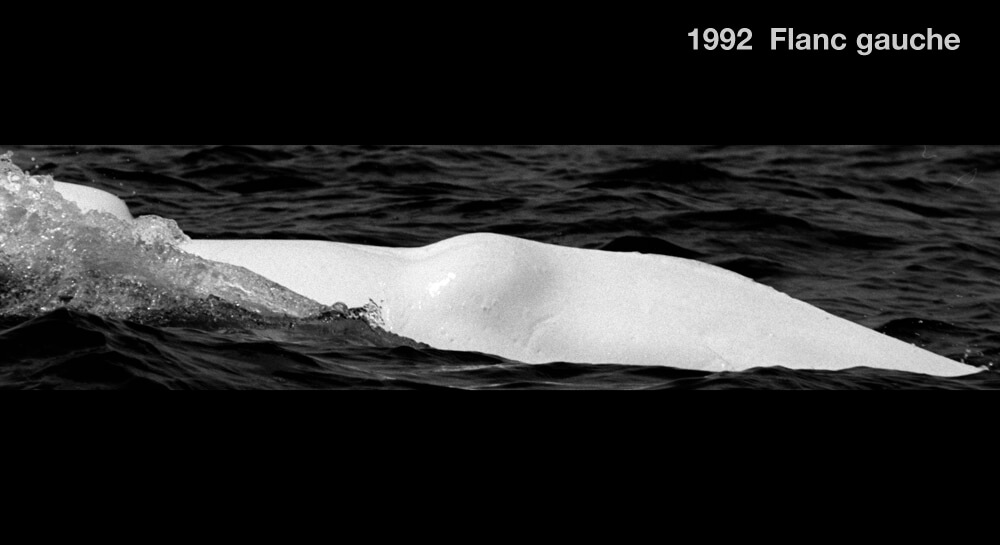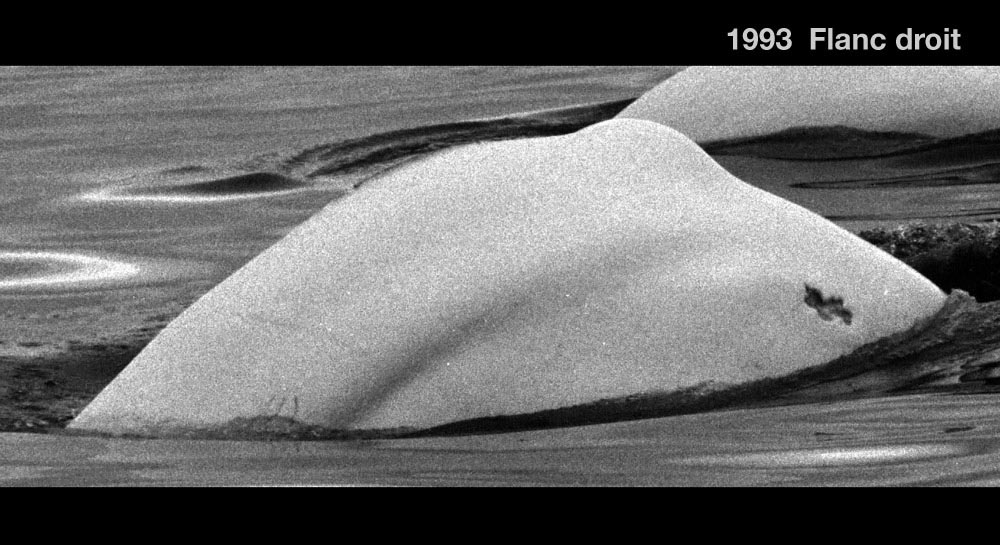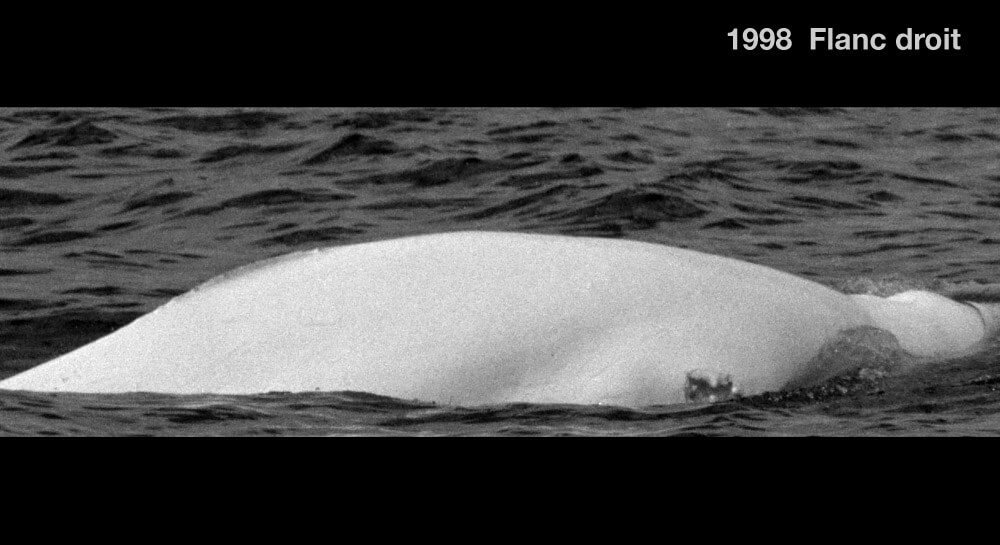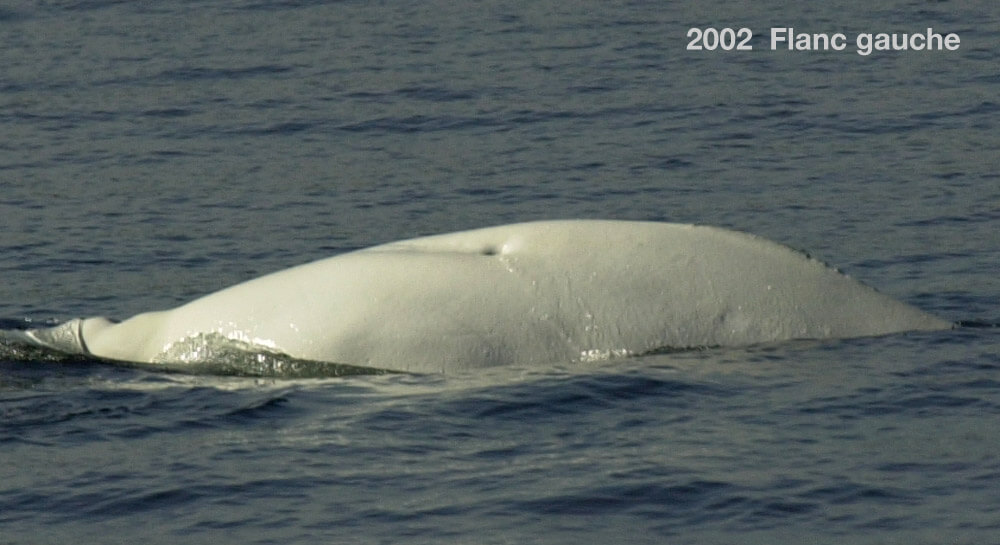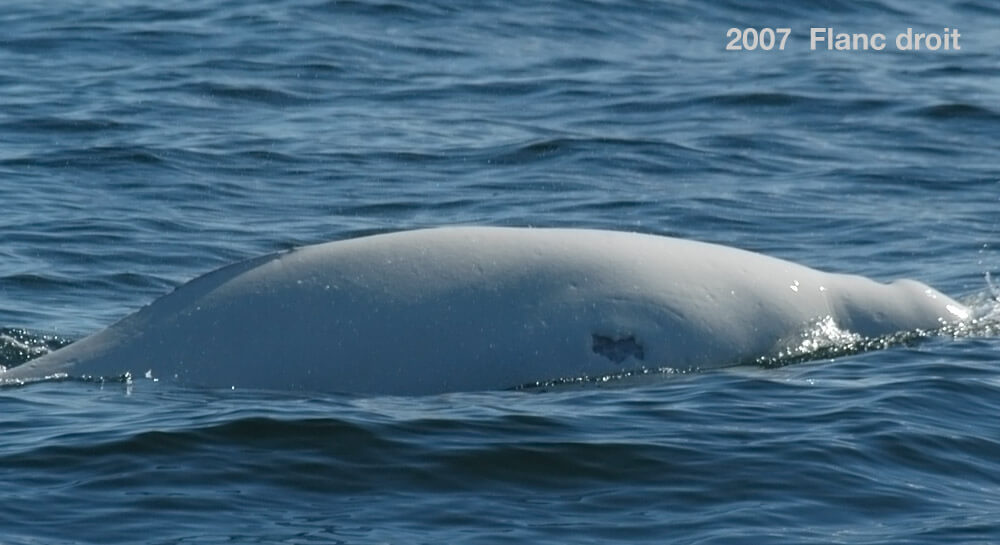Montpetit-Gustave
Beluga

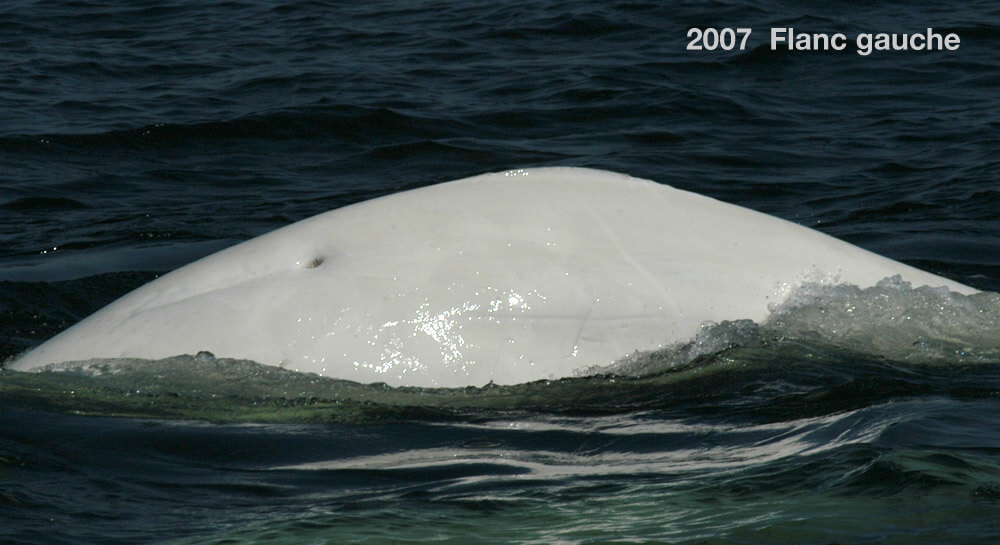
Adopted by Cégep Édouard-Montpetit students and collective sponsors
-
ID number
DL0217
-
Sex
Male
-
Year of birth
Before 1979
-
Known Since
1991
Distinctive traits
Montpetit-Gustave has a deep scar on the right flank. On the left flank, there is a hole.
Life history
The first time Montpetit-Gustave was photographed, in 1991, he was already immaculately white. Beluga whales change color from gray to white between the ages of 12 and 16. Montpetit-Gustave was born before 1979.
His large size and the company he keeps lead us to believe that Montpetit-Gustave is a male. Doubt was removed in 1998 with the results of genetic analysis of a biopsy taken from his back.
Like the other adult males in the population in summer, Montpetit-Gustave spends most of his summers in herds composed mainly of males. Three networks of males are known : two criss-cross the Saguenay Fjord and the head of the Laurentian Channel, while another, the “Downstream boys”, also uses the head of the channel and the downstream portion of the estuary, but avoids the Saguenay River. Montpetit-Gustave is one of these “Downstream boys”. To this day, we’ve never seen him in the Saguenay River.
Within the networks, the males form stable bands of mates. Montpetit-Gustave’s most loyal mates are Adhothyus, DL0110 and DL0232. These associations are established gradually and may play a role in the belugas’ reproductive life.
Regularly seen with...
Observations history in the Estuary
Years in which the animal was not observed Years in which the animal was observed
Latest news
On October 19, 2009, we recognized Montpetit-Gustave in a herd of around 25 adult belugas off the Bergeronnes dock. Among them, two individuals surfaced with their bodies covered in mud. This observation leads us to believe that they have dived to the bottom to feed on benthic organisms found buried in the sediment. To catch their prey, belugas have to stick their heads in the mud! They use their mouths like a vacuum cleaner.
Suction is their main method of capturing prey. Their teeth are only used to crunch prey, which they swallow without chewing. They feed mainly on bottom-dwelling fish and invertebrates. They also hunt in the water column and near the surface, swimming or treading against the current.
We set course for the downstream sector, where herds of males are regularly encountered. We come across Monpetit-Gustave in a herd of 40 adult male belugas off the north shore. We also recognize the males Trèfle and Le Survivant, the latter a regular visitor to the downstream sector and a regular companion of Monpetit-Gustave.
At the time of our encounter, the animals were scattered and alone or in small groups. Then, in the hours that follow, most of them come together in two large groups : one of 12 belugas, the other of 18. The rest continue on their way, alone or in pairs.
Sponsors
Collective sponsors adopted Montpetit-Gustave (2017).
Participating : Anon Anon, Bianca Raymond, Amélie Trottier-Picard, Florent Déry, Elaine Lecours, Thomas Jolicoeur, Maryse Plouffe, Normand Plouffe, Serge St-Amand, Marie-Claude Lord, Nathanaelle Vincent, Zee McClane, Céline Gay-Peiller, Audrey Hottin
Cégep Édouard-Montpetit students adopted Montpetit-Gustave (2017).
Participating in the group adoption were : Marie-Pier Raymond, Marina Des Roberts, Abigaëlle Dalpé, Alexandra Harvey and Noémie Raby-Chassé, Katrina Alexandrov and Amélie Trott.
As students at Cégep Édouard-Montpetit, we were fortunate to take part in last summer’s environmental challenge internship, which turned out to be a magnificent week-long experience aboard the Écomaris sailboat RoterSand at several locations on the St. Lawrence River. We learned a lot about the St. Lawrence and its marine biodiversity. After learning about a number of issues related to the river, we decided to take matters into our own hands. We wanted to take action, but we didn’t know how or what to do about it. Throughout our week, we had the chance to observe several belugas, and the idea of helping to save these whales came to us. We learned that it was possible to adopt a beluga by raising $5,000, which would go towards beluga research and providing them with a better environment. By adopting a beluga, we’re not just protecting a marine animal, we’re helping to preserve everything that surrounds them and their environment. The river belongs to all of us, and we are responsible for protecting and caring for it in different ways, which for us means adopting Montpetit-Gustave, our future beluga. A small gesture can make a big difference. Help us save the river and its biodiversity.
Cégep Édouard-Montpetit students
View some images of this inspiring journey :

